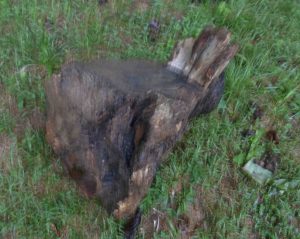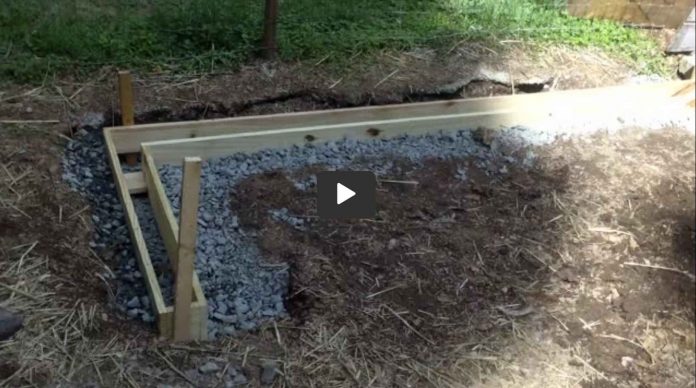This is another installment in my erratic-sporadic account of acquiring the means to remain sane – and healthy – as weaponized hypochondria does its awful work. I have, as readers already know, no intention of ever wearing the disgusting device styled a “mask” – which I style a Face Diaper, to convey the truth of its purpose – nor will I ever roll up my sleeve to be injected, as I am healthy and intend to remain so. And more than that, I intend to defend my right to own my own damned body.
But people like me – people like you, if you are reading me – face the possibility of being forced to rely upon our own resources as we may be forbidden to engage in normal commerce if we do not “mask” or submit to the Jab.
It is a possibility I have been fortifying myself against, as by raising chickens and ducksd (Muscovy ducks) on my own property – where I assume I will be left in peace (but if not, then another story). The chickens and ducks provide renewable protein in the form of eggs and meat. They also provide something of barter value, in the form of eggs and meat – which can provide other things I may need.
But my existing coop is dilapidated after years of not raising chickens and general neglect. In addition, it was built of wood, upon wood – and for that reason is rotting and must be replaced with a new coop. And that is the subject of this little essay.
The new coop is conceived upon lessons learned from the old, chief among these being to not build it upon wood, which sits on the earth and becomes wet – and (inevitably) will rot. Thus, the foundation for the new coop is of concrete; four inches deep and poured on a bed of gravel – for drainage and stability.
But not a slab – which is cold and hard and so not particularly good for the birds, as well as harder to clean when encrusted with the leavings of birds, which have nowhere to degrade and return to the earth, becoming a part of the cycle of life.
Instead, concrete footers – upon which I will build the frame of the coop using pressure treated 4x4s at all four corners. The digging is always the hardest part of this, especially if you have to deal with roots – my constant burden and hopefully not yours, if you ever decide to follow in my footsteps. It was inevitable, I suppose, that I would encounter one really big root after I had already laid out where the new coop would be built and after I had begun digging the trenches for the footers. This root was ancient and deep. Vertically deep. Not the usual branches, extending in a generally horizontal plane under the earth. This one went straight down into the bowels of the earth, the other end perhaps extending through the ceiling of Satan’s dwelling place.
It took the last measure of devotion – of my chainsaw’s bar and and chain – to get through enough of that root so as to be able to knock out a chunk of it with a sledgehammer (luckily, my shoulder is operational again, courtesy of random desktop re-location).
That done, I was able to set the forms in place and get them square and level, preparatory to the pour – which will commence this weekend, weather-permitting. The concrete will be four inches wide, around the perimeter – and upon the Roman stone will the sides be framed.
It all ought to go up easily enough once the main 4x4s are in place. Then the siding. Then a pair of barn-type/swing-out doors for the opening. Then a smaller opening for the birds to come and go as they like – into a secure/fenced run. Then a roof – probably metal over 1×6 framing boards but – maybe – a translucent material I’ve seen that would allow natural light (but I’m not sure about this because of our often hard winters here and the ability of this material to hold up under such conditions).
I’m trying to git ‘er done as quickly as feasible because one of our ducks – a female of the species is a duck; the males are drakes – is dramatically sitting on a clutch of at least six eggs and has been for about three weeks now. That means possibly six new birds, who will need a better home than the one they’ll likely be born in.
Hopefully, it’ll be open for business before their arrival!
. . .
Got a question about cars, Libertarian politics – or anything else? Click on the “ask Eric” link and send ’em in! Or email me at [email protected] if the @!** “ask Eric” button doesn’t work!
If you like what you’ve found here please consider supporting EPautos.
We depend on you to keep the wheels turning!
Our donate button is here.
If you prefer not to use PayPal, our mailing address is:
EPautos
721 Hummingbird Lane SE
Copper Hill, VA 24079
PS: Get an EPautos magnet or sticker or coaster in return for a $20 or more one-time donation or a $10 or more monthly recurring donation. (Please be sure to tell us you want a magnet or sticker or coaster – and also, provide an address, so we know where to mail the thing!)
My eBook about car buying (new and used) is also available for your favorite price – free! Click here. If that fails, email me at [email protected] and I will send you a copy directly!












I just now watched the video, the top image must’ve thrown me off, it just clicked open like a photo.
Interesting setup. Have you ever considered getting someone to video while you do the work & create the stuff? Sorta like the homesteader’s do?
That pond project is on my ‘someday’ list, right after I build a duck hutch and get some ducks,… and drakes. I would like to see how you do that.
When I saw your fence it reminded me that I plan to build something like that, only, the fence would be taller, or have an extra bit on the top which is not secured so-much, so that when a day-time varmint tries to climb it, the fence flaps outward, and they fail to gain entry.
I’m at the point where I’m ready to hang hardware cloth on my coop, I ran across a bit suggesting to secure it down similar to how canvas is attached to a frame in order to get the hardware cloth tight and to avoid bubbles. We’ll see how that goes.
Here’s a diagram of the order of operations for attaching hardware cloth, if you’re interested:
https://i2.wp.com/www.whitneyclaire.com/wp-content/uploads/2014/08/output_EcnSUe.gif?resize=200%2C230
Hi Helot!
I sank the fence all six inches deep, set in concrete – to prevent predators from burrowing under the fence. It does the trick! I poured the footers yesterday; I will post a video shortly… as in the next 30 minutes or so!
For posterity: that order of operations for attaching hardware cloth like canvas on a frame, didn’t work well for me. I wound up screwing a single screw in at each end to get it tight-ish, then working the canvas pattern from one end and working towards the other. I had way less bubbles that way.
I would imagine that anyone with windows on a coup would at least want hardware cloth over them on the inside so you could leave the windows open during the Summer to catch a breeze. (a second window opposite the one, to catch a cross-breeze? Otherwise, things get suffocating?) Unless, somehow, there’s no: raccoons, possums, rats, mink, or snakes in your area. I have all of those and more. … It’s a good thing that frogs don’t eat chickens, or there’d be no way I could have some!
Hi Helot,
I secure the same wire mesh I use for exterior fencing to the inside wall around the perimeter of the window, so that the window opens – but things can’t climb in! The window on the far wall will not need this since it will face a completely secure run. Only the window on the opposite end, which faces the breezeway.
More pictures and commentary, soon!
That canvas diagram works GREAT for hardware cloth shorter than 40 inches or so and for chicken wire I think that pattern is an absolute Must Do.
I managed to get some chicken wire almost guitar string-tight. I was surprised at how well that worked out.
I think the reason that canvas pattern didn’t work out too well for me the first time was because I was securing lengths from 45 to 80 inches long.
I have only to add a few more lengths of pallet wood and setup a crank wheel to open and close the pop door and I’ll finally be done.
I’ve managed to fill a 5 gallon bucket with pallet nails, that must mean I’m a part of some club or something now?
I broke down and spent a few Dollars for this a few months ago:
Global Industrial™ Deluxe Pallet Buster & Skid Breaker
https://www.globalindustrial.com/p/best-value-deluxe-pallet-buster-skid-breaker
So far, I’m pretty impressed with this tool. It’s not ‘The Best’ for the widest boards, if it were, it wouldn’t be Great for the shorter ones.
I’ve seen guys make similar pallet tools out of wood, I think one of those would be good to have in addition to the metal one for the wider boards.
Looking forward to the final, Coop in Process Installment.
You got a permit for that, citizen? 😉
Hi Roland,
One of the things I like about living where I do is that there are no zoning regs – yet – and one doesn’t need to obtain permission to build such things as a chicken coop on one’s own property. If that ever changes, I’ll be leaving.
Good for you, Eric. Of course my comment was in jest, but it brings to mind a recurring theme of yours: that most regulations and the penalties therefor exist because of what might happen, instead of on actual harm done.
In our formerly-sensible rural county (more and more a bedroom community for the big city 50 miles away) you’re not supposed to so much as drive a fencepost without calling the Dig-Rite hotline. Yes, the phone company might have tiptoed in night before last and buried a fiber-optic cable. If I dig without calling first, I might sever it! I might cut service to thousands of neighbors! One of them might have a heart attack and might not be able to call for help!
I recently secretly relocated one of the county’s ridiculous “No Passing Zones Unmarked” signs that was in my way for cutting grass along the road ditch. I knew there was a phone cable very close by. With my luck, I thought, I’ll hit it when driving the post, and then not only will I be in trouble for “digging” without permission, but they’ll find out about my dastardly plan for the sign too. So I called (their website was hopelessly dysfunctional). I told her I had the exact latitude and longitude of the spot. “There’s no place to put that,” she said. So I described it as best I could. When the confirmation email came, the location was off by almost a quarter-mile. So I canceled the request and called again, this time getting an agent who seemed halfway intelligent. I tried to be more precise, and this time they seemed to get it pretty close. All of the other utilities were required to come out and check it too, even though I was 100 percent certain that the only thing near there was the phone line. After the phone guys finally did their thing, I found that they had marked the first location, and their spray-paint scrawlings were so cryptic that I couldn’t tell what they meant anyway. So with no orange paint anywhere near the actual site, I just went ahead, which is what I should have done in the first place.
Make sure and oil those forms!
Coop d’état! Coop d’état!
Excellent work, Eric! We’ll be leaving our Mark I chicken coop here when we leave for my rural land, and plan for a much bigger, more robust version out there.
Thanks to you, I will consider ducks as well. Diversity is strength, as they say. 😉
Ever consider rabbits? I hear meat rabbits are a good way to go for another food source.
‘This one went straight down into the bowels of the earth, the other end perhaps extending through the ceiling of Satan’s dwelling place.’ — EP
Favorite joke of my dad’s:
A preacher making his rounds visited a congregation member who was behind his house, sawing and hammering. Through the open window of the house, the man’s wife was hawking and sneezing.
“Is that your wife’s coughin’?” asked the parson.
“Naw,” replied the man. “It’s a chicken coop.”
Haha, I laughed, Jim. You’ve done your good deed for the morning.
Ha! I’m like, ‘what’s funny about that?’
I had to read it three times before I got it. … I’m more tired than I thought.
Hi Eric, sounds like you’re on the right track. The only suggestion I would offer, whatever number of birds you think you need for eggs and meat, double that. lots of circumstances beyond your control with baby chicks. Once you have sixty to ninety days invested in their care is a bad time to find out you have a bunch of boys. If you do end up with too many girls you can always trade, sell, or eat them.
There are a number of small animal/bird swap get togethers in my area. They’re kind of fun & there sure is a lot of variety, plus it’s a great way to meet people. The ones I go to there’s only a couple of hundred people or so, but I keep hearing about a bigger one a few hours away which draws thousands of people.
They’re sorta like car shows, only with fowl & fur.